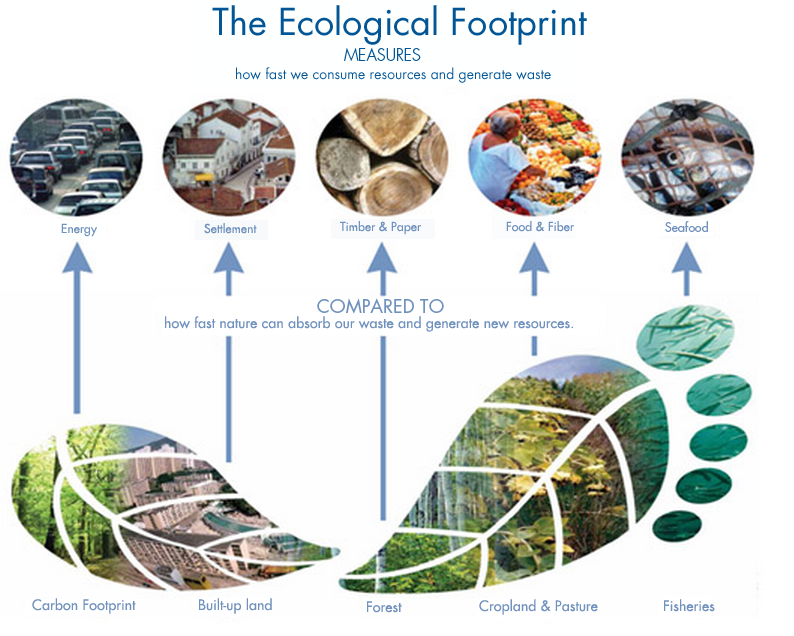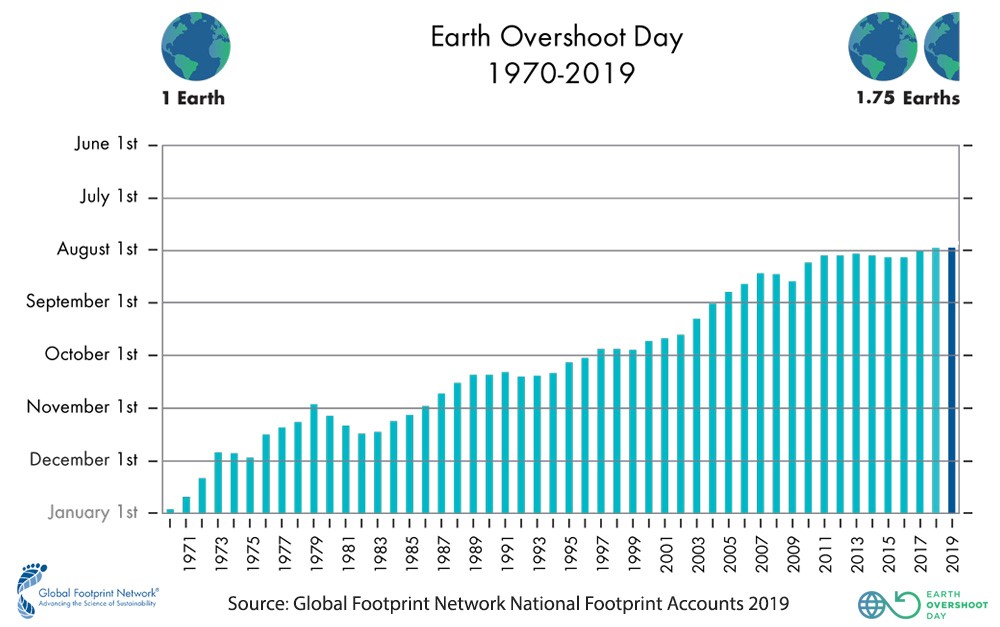“If we did to our bank account what we have been doing to the Earth’s natural capital we would have been bankrupt long ago.”
~Christina Figueres, former Executive Secretary, United Nations Frameworks Convention on Climate Change
Planet Earth has over eons generated a vast endowment of natural capital, which the World Forum on Natural Capital defines as “the world’s stocks of natural assets which include geology, soil, air, water, and all living things.”
Natural capital is the source of human existence and our capacity for thriving. Everything we do is ultimately derived from the endowment of natural assets generated and sustained by the Earth.
Endowments can last forever if they are managed properly. A fundamental tenant for managing an endowment that needs to last forever is to live off interest generated and avoid dipping into interest-generating principal, and in the case of natural capital, avoid contaminating it as well.
The reasons for this are obvious: spending more than the limits of our income puts us in debt. Reducing the size of an endowment reduces its capacity to generate income; contaminating the stocks of air, water, soil, and other living things weakens the endowment even more. Keep this up long enough and, no matter how large and productive, the endowment will eventually weaken and collapse.
This is the situation we are now facing. Since the beginning of the Industrial Revolution, and as the population has correspondingly exploded, humanity has been tapping and contaminating our natural capital endowment at an ever-increasing rate. We are now at the point where evidence is starkly clear that our seemingly immense and inexhaustible endowment is in fact very limited and under extreme duress.

Credit: Global Footprint Network
Since 1970, humanity has been accumulating deficits of natural capital. Each year since and at an ever-increasing rate we have taken more resources than the Earth can regenerate, and produced more waste than the Earth can absorb – the most globally damaging waste being excessive greenhouse gas emissions – annually reducing Earth’s capacity to support life as we know it.
We know this because of an accounting tool known as the Ecological Footprint, “the only measure which tracks how much nature we have – and how much nature we use.” The Ecological Footprint was developed in 1990 by Mathis Wackernagel and William Rees at the University of British Columbia and is managed by the Global Footprint Network (GFN).
To draw attention to humanity’s overuse of nature, GFN created Earth Overshoot Day, which “marks the date when humanity’s demand for ecological resources and services in a given year exceeds what Earth can regenerate in that year…. Earth Overshoot Day is computed by dividing the planet’s biocapacity (the amount of ecological resources Earth is able to generate that year), by humanity’s Ecological Footprint (humanity’s demand for that year), and multiplying by 365, the number of days in a year:
(Planet’s Biocapacity / Humanity’s Ecological Footprint) x 365 = Earth Overshoot Day”

Global Footprint Network National Footprint Accounts 2019
The chart to the right shows the inexorably growing natural capital deficit since 1970, as Earth Overshoot Day occurs earlier and earlier during the year. In 1979, Earth Overshoot Day occurred in late October. 40 years later, in 2019, it occurred on July 29.
According to GFN’s Public Data Package, humanity is using the equivalent of 1.75 Earths; and if everyone lived like the average American the estimate is that it would take 5 Earths to support the human population.
Human population – 2.5 billion in 1950, 7.8 billion today – combined with increased consumption and degradation of natural capital explain why we face a climate crisis, why so many ecosystems are under duress, and to a large extent why there is so much societal turmoil globally.
The Global Footprint Network has calculated each nation’s ecological footprint, and offers an ecological footprint quiz that each of us can take to determine our individual footprints. We have the information and tools at hand to understand individually and collectively how much nature we use, and how much nature we can use and stay within the ecological limits that allow life to thrive.
As GFN points out, “The current trend is not our destiny.” We know everything we need to do to reduce our ecological footprint and restore Earth’s capacity to generate natural capital, which are the same things we need to do to reverse global warming and stabilize the climate.
Furthermore, doing what is necessary does not require sacrificing our quality of life. On the contrary, reversing these trends will create jobs and enhance quality of life across the globe. Not doing what is necessary threatens life as we know it.
GFN has identified five key areas of impact and opportunity:
- Cities: How we design and manage cities
- Energy: How we power ourselves
- Food: How we produce, distribute, and consume food
- Planet: How we help nature thrive
- Population: How many of us there are
These five areas mirror the solutions to reversing global warming found in Project Drawdown, and in the internationally adopted Sustainable Development Goals. They are in so many ways the same solutions, solutions that offer extraordinary opportunities.
The Ecological Footprint is a practical accounting tool for understanding “how much nature we have, and how much nature we use.” With this ledger, we can be responsible stewards of our natural capital endowment. We can learn to save. Most importantly, we can learn to respect and live within the laws and limits of the finite Earth, the only source of wealth and wellbeing there is. We have no choice. As Donella Meadows reminds us with this sobering observation: “There will always be limits to growth. They can be self-imposed. If they aren’t they will be system-imposed.”





The current Trump administration is squandering natural capital as rapidly as they are squandering tax payer revenue on golf outings. Both at absurdly record levels.